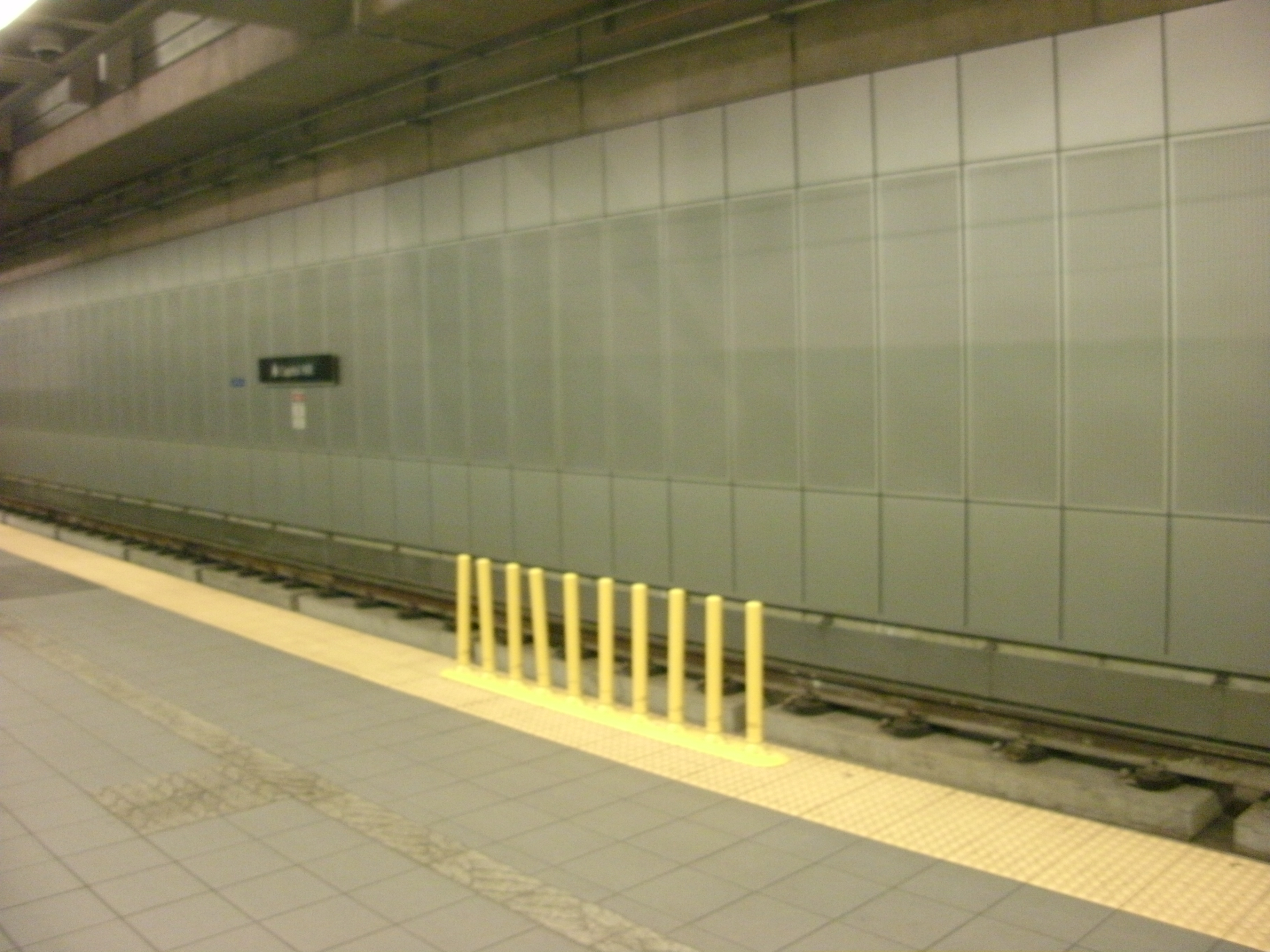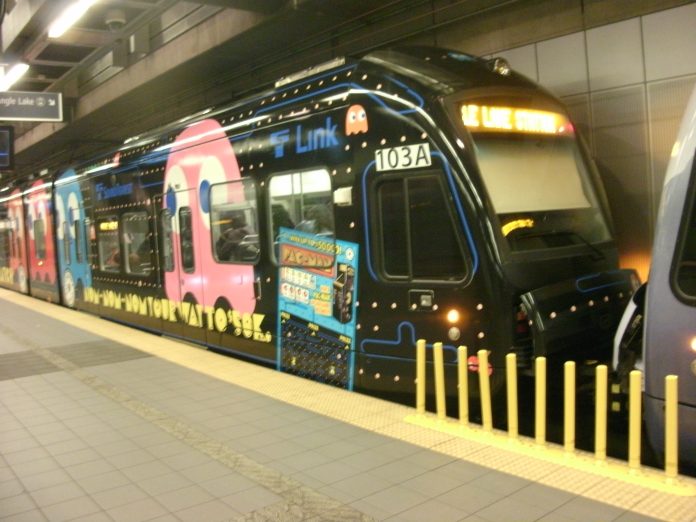At light rail stations across the Central Link network, Sound Transit has installed safety barriers to meet a mandate by the Federal Transit Administration (FTA) to better achieve the goal of the Americans with Disabilities Act (ADA) of 1990. “The between-car barriers are supplemental to the wayfinding pavers, and are specifically intended for a vision-impaired rider who may mistake the area between cars for a door,” Sound Transit says. “The spacing on the barriers meets the regulations for the cane-swipe.” Similar light rail systems in Los Angeles and St. Louis have also deployed barriers to reduce the chance of visually-impaired riders from falling between train cars.
In September 2015, the FTA circulated a letter highlighting the falling hazard issue stating:
Under 49 C.F.R. § 38.85, where light rail vehicles operate in a high-platform, level boarding mode, devices or systems must be provided to prevent, deter, or warn individuals from inadvertently stepping off the platform in between cars. The intent of this provision, which has been a part of the [Department of Transportation] ADA regulations since September 6, 1991, is to require light rail systems to obtain suitable devices to assist with and prevent passengers from mistaking the gap between cars for a doorway and potentially falling onto the trackbed.
I believe the confusion regarding the between-car barrier requirement centers on the fact that there is no regulatory definition of “high-platform.” But, the regulatory language links “high-platform” to “level boarding mode” and must be considered in conjunction with other key parts of the regulation, which clearly point to the relationship between platform height and entrance to the vehicle floor—an alignment that must occur to create a level boarding environment. Thus, the requirements in 49 C.F.R. § 38.85 are designed to deal with the safety problem resulting from the gap between cars when vehicles operate in this high-platform, level-boarding mode. Furthermore, the regulation recognizes that level boarding from high platforms (where the platform height is coordinated with the height of the vehicle floor) provides the most accessibility for the maximum number of people.
These requirements address the need to mitigate the hazard of a gap created between two or more rail cars operating in a consist. All travelers must have safe, unimpaired access to a light rail system. In a level boarding/platform environment without between-car barriers, the hazard of falling to the trackbed exists whenever a light rail system operates trains of more than one car.

So far, Sound Transit has installed safety barriers at the edges of platforms for 12 stations. The stations in the Downtown Seattle Transit Tunnel (DSTT) are the only ones without the barriers because of the dual operations of trains and buses. According to Sound Transit, barriers in the tunnel could “impede boarding or egress of buses, especially if more than one bus is at a single bay.” But when the buses finally come out of the tunnel for the last time, barriers will be installed. Sound Transit will also deploy barriers to future light rail stations.
The cost for the barriers is approximately $2,508 a piece with each station requiring a minimum of four with the current two- and three-car train fleet. Sound Transit has authorized just over $346,000 for barrier procurement of a total of 21 stations. That is enough for each of the stations in operation today, two stations in the Northgate Link extension, and two extra spares where needed. For now though, Sound Transit has only exercised $155,000 of the project funds for the initial 12 stations.
Separately, Sound Transit has piloted six-month platform project meant to improve the boarding and alighting process to reduce delay and enhance passenger safety and comfort. That project involved placing markings on platform floors where light light doors open indicate where waiting passengers should stand so that passenger onboard trains could exit more easily. The pilot will end this summer (with some markings already removed due to deterioration), but could be extended and enhanced. Sound Transit’s Operations group hopes to receive user feedback on the usefulness of the markings, particularly from passengers with mobility challenges and visual impairment.
Between Car Barrier_FTA Letter on LRT Vehicle Car Barrier Requirements
Stephen is a professional urban planner in Puget Sound with a passion for sustainable, livable, and diverse cities. He is especially interested in how policies, regulations, and programs can promote positive outcomes for communities. With stints in great cities like Bellingham and Cork, Stephen currently lives in Seattle. He primarily covers land use and transportation issues and has been with The Urbanist since 2014.


